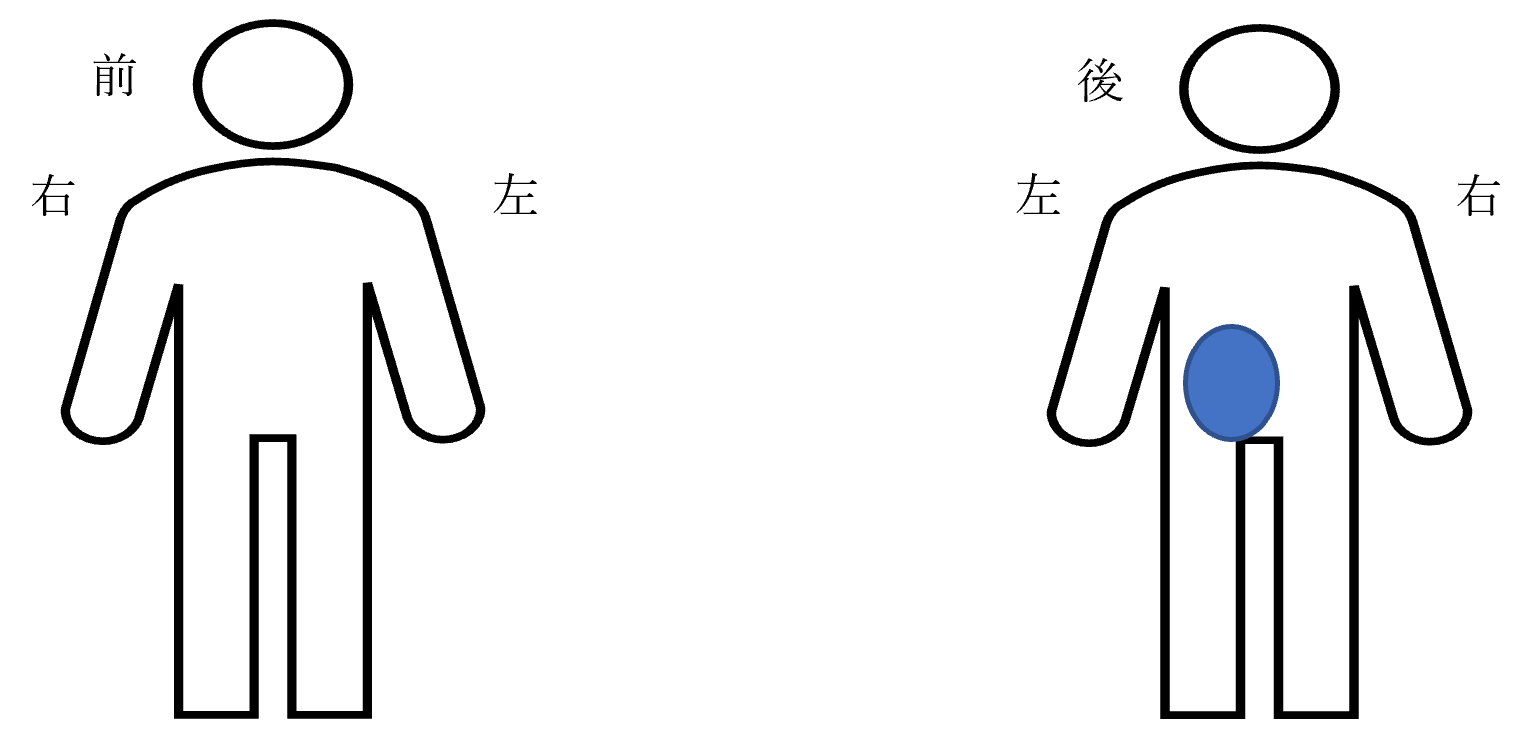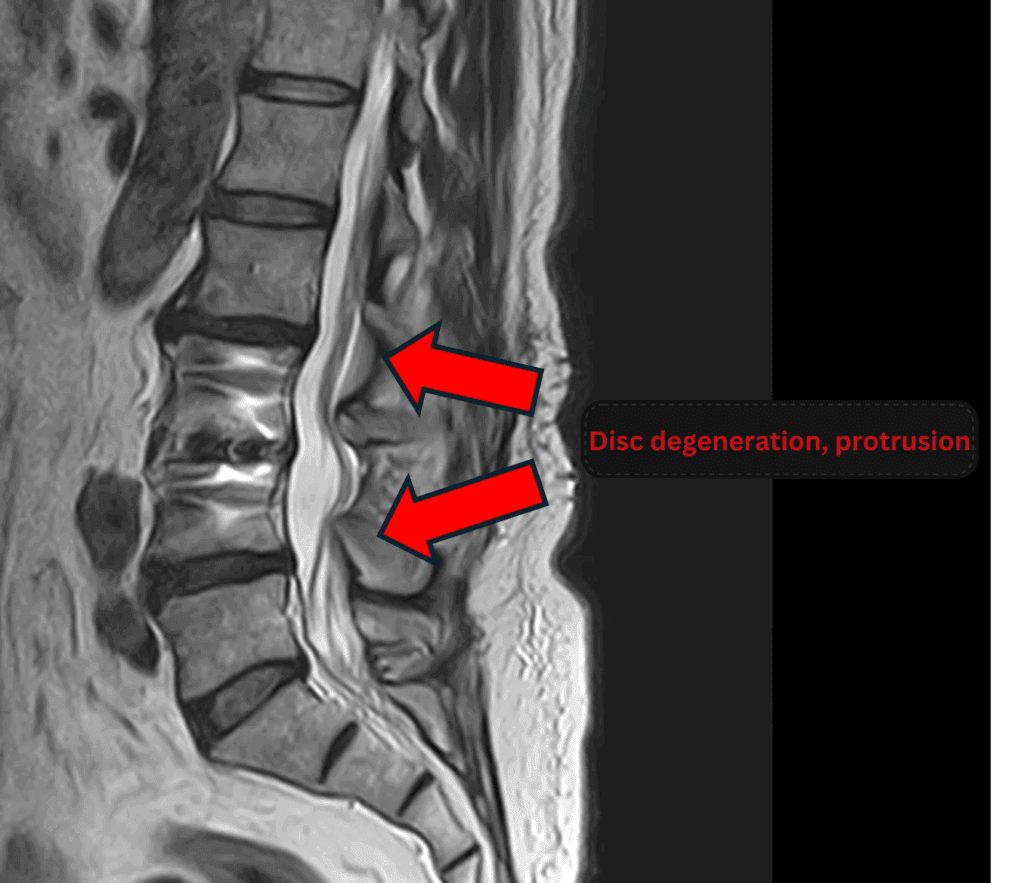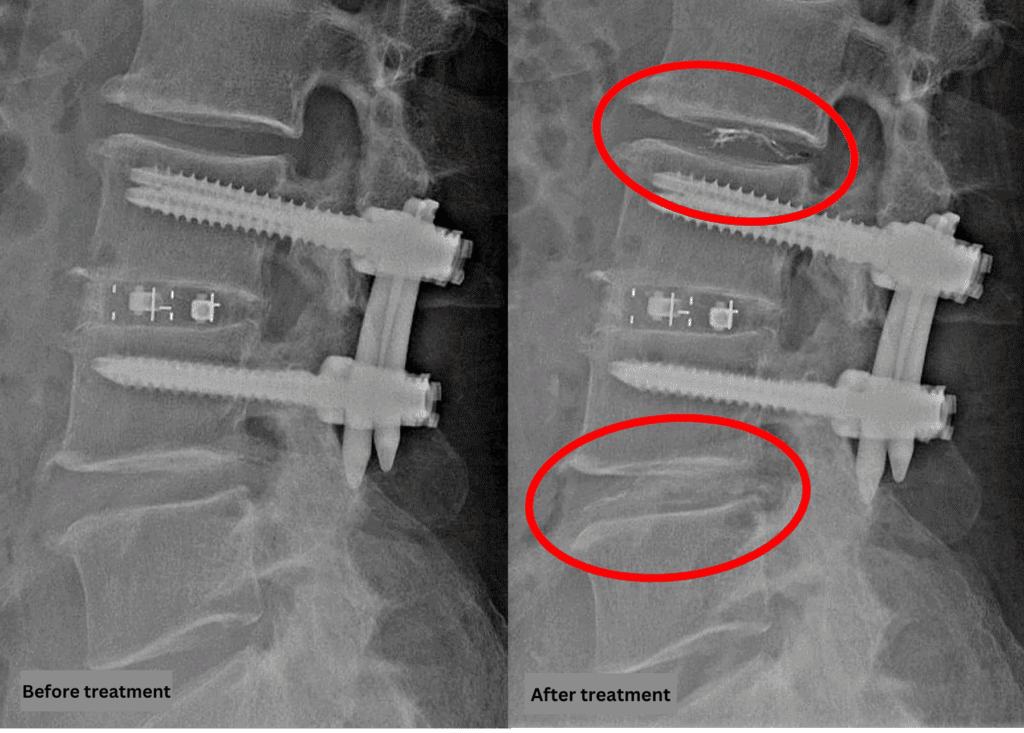Column Treatment Case Report No. 162| ILC International Lumbago Clinic (Osaka Clinic)
August 2, 2025
The patient
A male patient in his 70s.
The patient’s medical history to date
Since his 30s, he has been experiencing acute lower back pain several times a year, but it usually subsides within about a week with the use of pain patches.
Around the age of 60, he began experiencing episodes where he could not put weight on his legs after walking, making it difficult to walk.
About 5 years ago, he visited another hospital and was diagnosed with disc herniation. He underwent posterior fusion surgery.
After the surgery, the acute lower back pain disappeared, and the symptoms during walking improved. However, the inability to exert strength in the lower back and legs persisted.
The patient visited our clinic seeking to improve his symptoms.
Symptoms before treatment
Turning over in bed: no problem
Standing up: somewhat difficult
Washing one’s face: no problem
Maintaining a bent-over posture or standing position: somewhat difficult
Prolonged sitting: very difficult
Lifting or carrying heavy objects: very difficult
・Pain levels before treatment
| Lower back | Lower limbs | Numbness | Buttocks | |
|---|---|---|---|---|
| Pain level | 5 | 3 | 3 | 4 |
No pain at all is rated as 0, and the maximum possible pain is rated as 10.
Main areas of pain and numbness: lower back on the left side, buttocks.

Bending forward: limited due to pain
Bending backward: more mobility than with forward bending, but also limited due to pain
Lasegue test:Pain at an angle of approximately 45 degrees on the left side
Lumbar tenderness points: L3/4 on the left side, L4/5 on the right side
Coughing and sneezing: sneezing causes aggravation of pain in the back
Additional explanations on our clinic’s medical examination
Imaging and findings

- L2/3, 4/5 – Disc degeneration, protrusion
- L3/4 – Post-operative fusion
The above findings were also observed on the imaging.
Findings show that the compression of the spinal canal on discs L2/3 and 4/5 is the probable cause of the symptoms.
Treatment
After consulting with the patient, the Cellgel Method was performed on L2/3 and 4/5.
The treatment was performed by Dr. Ohara.

The treatment took about 25 minutes.
After resting in the recovery room, the patient was able to walk home by himself.
Our clinic’s treatment method
Additional information about the Cellgel method we have introduced in this column.
Cost of the Cellgel method: 1,320,000 yen per area (including tax) to 1,760,000 yen per 5 areas (including tax)
Risks and side effects of the Cellgel method: Transient pain may occur after treatment. Nerve damage is not a zero possibility due to the very nature of the treatment, but there have been no reports of damage so far in either report cases or publications. There is a very small possibility of allergic reactions to local anesthetics. Symptoms may temporarily worsen during the first week or two after treatment. This is believed to be due to the decompression effect of the implant, which retracts the surrounding tissues. In addition, if the disc is almost completely collapsed, treatment may be difficult. The doctor hold a consultation with you during your visit to the clinic to determine the best treatment option for your condition.
For more detailed information, please refer to the following links:
Blog page explaining the Cellgel Method in an easy-to-understand manner
The Cellgel Method on our treatment methods page
This article was written by the Administrative Director of our clinic



